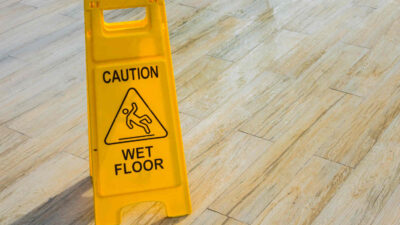Wicks Dreads have recently exploded in popularity among locs. You’ve probably seen celebs and social media influencers wearing the classic look. You’ve come to the right site if you want to learn about the history of wick dreads and how you can join the trend. We’ll cover everything you need to know about wicks, one of the most popular dreadlock styles today, in this article. Let’s get this party started!
Wicks Dreads: What Are They?
Wicks dreads are among the thickest dreadlocks available. They’re so thick that some of them only have 4-10 wicks on their heads. The hairstyle’s name comes from the standard candle wick, which stands straight up with long wicks dangling downward.
What’s the Story Behind Wicked Dreads?
Wicks originated in South Florida, but they gained widespread popularity after celebrities such as Kodak Black wore them. People began to emulate the style soon after. Given how much power celebrities wield over the public, it’s no surprise that wicks have made their way into popular loc culture.
Is It Necessary to Have Long Hair to Get Wicks Dreads?
This section is for you if you’re unsure if you have enough hair for wicks. To start your wicks, you’ll need at least 6 inches of hair. After making the wicks, you should have enough hair to stand a few inches above your scalp. Having adequate hair simplifies the wick cultivation process and lowers wick installation costs.
It isn’t to imply that you cannot use wicks on long hair. The primary advantage of starting wicks with long hair is that you get long wicks right away. Unfortunately, some people have difficulty crocheting large chunks of hair or long locks. It could take a long time.
The Crochet Wick Combine Method
Crochet wicks are the most popular method for making wicks. You’ll need a crochet needle to join the locs together. You won’t have to wait for your wicks to form — they’ll be ready right now. Follow these methods to make wicks out of your loose hair or traditional locs.
- To figure out how many wick dreads you’ll need, start by sectioning your locks or loose hair with rubber bands. Some people prefer a small number of wicks, while others prefer a large number. Only use rubber bands at the beginning and end of each section.
- Develop your wicks. To make your wicks’ internal structure and outward shape, you’ll need prong crochet needles. Begin crocheting while placing your hair between your index, thumb, and middle fingers. Begin pulling the crochet tool into or out of the part at the hair roots or locs. Crochet a spherical shape around the loc. The hair will begin to tangle and merge into a cylindrical form. Gradually work your way down the hair part to complete the wick.
Extensions for Crochet Wicks
Consider crochet wick extensions if you desire long wick dreads right now. You can utilize them to begin your wicking adventure or extend your current wicks. Follow the steps below to start wicking with extensions:
- Pick your wicking extensions. Wick extensions are available in a variety of diameters and lengths. Depending on the aesthetic you want, you can use trim, medium, big, or giant wicks.
- Apply any type of oil to your scalp and massage it thoroughly.
- Put a rubber band at the base of each portion of your hair. The sections must be the correct size for the extensions you purchased. Your new growth will not match your wick extensions if you don’t. Your sections should be much bigger than your wick extensions. Consult a loctician if you’re unsure how big your sections should be.
Rubber Band Technique
Rubber bands are an excellent way to create wicks in loose afro hair. All you have to do is split your loose hair into large portions and secure each section with rubber bands. The first time around, leave the rubber bands in for 3 weeks to a month. Remove the rubber bands when that period has passed and see if your hair is starting to grow on its own. If it isn’t locked, replace the rubber bands and wait for another 3 to 4 weeks. You won’t need the rubber bands once your hair is locked.
Wicks Dreads Care Instructions

Keep the following suggestions etched in mind while you grow your new wick dreads:
- Make sure all of your wicks are the same size for a good, uniform look.
- Don’t forget about your wicks. Use a clarifying shampoo to wash them regularly. Wash your hair once or twice a month to keep hygienic wicks, depending on how rapidly they get dirty.
- Regularly moisturize your scalp, and don’t forget to cover your hair with a silk or satin cap or scarf at night.
- After cleaning the wicks, dry them thoroughly with a microfiber towel before air drying or blow-drying them. It will prevent the growth of mildew and mold.
- Keep your wicks moist by spraying them with rose water and a little oil daily.
Conclusion
You now understand what wicks are, what they aren’t, and how to make them with locs and loose hair. You’ll have proper wicks in weeks if you use the correct procedure. We hope you found this post useful, and we wish you luck on your wicking journey!




